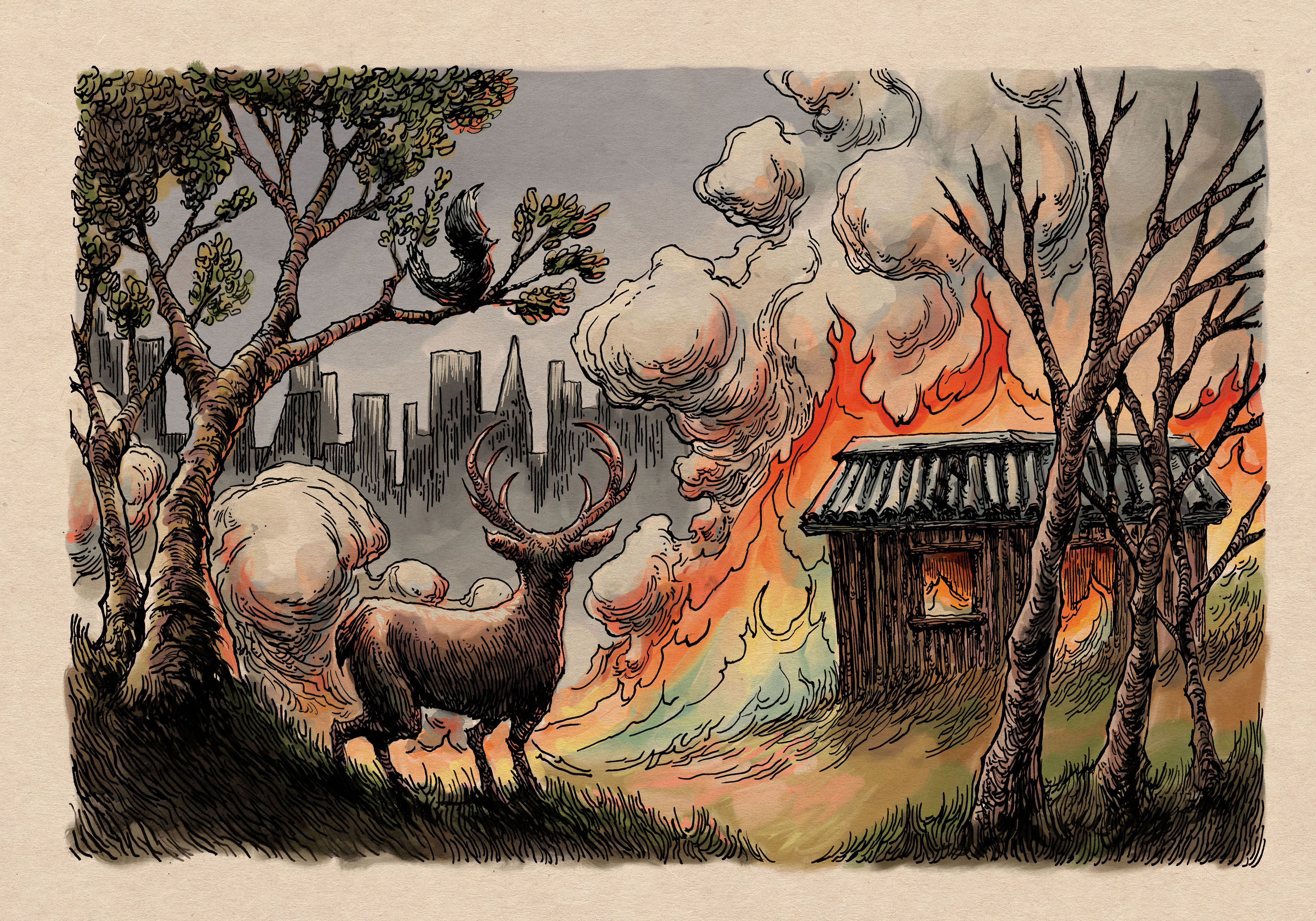Evaluación de la recuperación de las selvas tropicales del Parque Nacional Main Range después de los incendios forestales Black Summer 2019/20 en Australia
DOI:
https://doi.org/10.7764/plan.058.140Palabras clave:
Recuperación, dNBR, Selva tropicalResumen
El Parque Nacional Main Range (MRNP) experimentó incendios sin precedentes y fue gravemente afectado por los incendios forestales de la temporada 2019-2020, conocidos como el “Verano Negro” o Black Summer. Esta investigación tiene como objetivo comprender cómo se recuperan las selvas tropicales de los incendios forestales severos, comparando su recuperación con la de los bosques de eucaliptos y determinando cuáles ecosistemas regionales de selva (RE) están expuestos a mayor riesgo. Se utilizó la imagen de Sentinel 2 para calcular los valores de dNBR del incendio y los tres años siguientes, validándolos mediante una prueba t emparejada para detectar cambios, con el fin de entender cuán severo fue el incendio y cómo se recuperó la selva tropical. Se descubrió que 81,28 km² se quemaron con una severidad extrema o alta, y 28,35 km² de selva tropical se recuperaron, dejando solo 0,35 km² quemados para 2022. Se determinó que el RE 12.8.4 era el más vulnerable al fuego, debido a que los 0,02 km² restantes quemados en 2022 aún mostraban quemaduras de severidad moderada o alta, lo que permite la posibilidad de transiciones comunitarias, a pesar de que solo se quemaron 2,4 km² en total. Estos resultados muestran que la selva tropical puede recuperarse de incendios extremos; sin embargo, algunos ecosistemas tardan más tiempo en recuperarse y están en mayor riesgo. Este estudio es relevante para futuras respuestas ante incendios, con el fin de priorizar áreas como el RE 12.8.4 para su protección, y además profundizar en el entendimiento de la resiliencia de las selvas tropicales ante los incendios.
Descargas
Citas
Alcaras, E., Costantino, D., Guastaferro, F., Parente, C., & Pepe, M. (2022). Normalized Burn Ratio Plus (NBR+): A new index for Sentinel-2 imagery. Remote Sensing, 14(7), 1727.
Australian Government. (2023). World Heritage places - Gondwana Rainforests of Australia. Retrieved August 15, 2023, from https://www.dcceew.gov.au/parks-heritage/heritage/places/world/gondwana#resources
Bonney, M. T., He, Y., & Myint, S. W. (2020). Contextualizing the 2019–2020 Kangaroo Island Bushfires: Quantifying landscape-level influences on past severity and recovery with Landsat and Google Earth Engine. Remote Sensing, 12(23), 3942.
Gibson, R. K., & Hislop, S. (2022). Signs of resilience in resprouting Eucalyptus forests, but areas of concern: 1 year of post-fire recovery from Australia’s Black Summer of 2019–2020. International Journal of Wildland Fire, 31(5), 545-557.
Gorta, S. B., Callaghan, C. T., Samonte, F., Ooi, M. K., Mesaglio, T., Laffan, S. W., & Cornwell, W. K. (2023). Multi-taxon biodiversity responses to the 2019–2020 Australian megafires. Global Change Biology, 29(23), 6727-6740.
Hines, H. B., Levy, S., Laidlaw, M. J., Midtaune, K., Finlayson, S., & Meiklejohn, A. (2021). Post-fire assessment report—Natural values: 2019 bushfire complex, Main Range National Park and adjacent QPWS estate, South West Queensland Region. Brisbane: Queensland Government.
Knox, K., & Clarke, P. (2012). Fire severity, feedback effects and resilience to alternative community states in forest assemblages. Forest Ecology and Management, 265, 47-54.
Krause, C., Dunn, B., Bishop-Taylor, R., Adams, C., Burton, C., Alger, M., ... & DEA Notebooks Contributors. (2021). Digital Earth Australia notebooks and tools repository. Canberra: Geoscience Australia.
Laidlaw, M. J., Hines, H. B., Melzer, R. I., & Churchill, T. B. (2022). Beyond bushfire severity: Mapping the ecological impact of bushfires on the Gondwana Rainforests of Australia World Heritage Area. Australian Zoologist, 42(2), 502-513.
Qi, F., Zhou, Y., & Feng, S. (2021). Strengthening destinations’ resilience from bushfires - A study of Eastern Australia. Journal of Management and Sustainability, 11(2), 43-56.
Queensland Department of Environment and Science. (2013a). Main Range National Park—Facts and maps, WetlandInfo Website. Retrieved August 15, 2023, from https://wetlandinfo.des.qld.gov.au/wetlands/facts-maps/national-park-main-range/
Queensland Department of Environment and Science. (2013b). Plants of Main Range National Park, WetlandInfo website. Retrieved August 18, 2023, from https://wetlandinfo.des.qld.gov.au/wetlands/facts-maps/wildlife/?AreaID=national-park-main-range&Kingdom=plants
Queensland Government. (2013). Rainforests. Retrieved September 1, 2023, from https://www.qld.gov.au/environment/plants-animals/habitats/rainforests#:~:text=Rainforests%20in%20South%20East%20Queensland,covered%20tree%20trunks%20are%20typical.
Queensland Government. (2023a). Biodiversity status of 2021 remnant regional ecosystems - Queensland. Retrieved October 6, 2023, from https://qldspatial.information.qld.gov.au/catalogue/custom/detail.page?fid={8FDF54D2-654C-4822-8295-1D8E8E772373}
Queensland Government. (2023b). Search regional ecosystem descriptions. Retrieved October 9, 2023, from https://apps.des.qld.gov.au/regional-ecosystems/
Saunders, M. E., Barton, P. S., Bickerstaff, J. R., Frost, L., Latty, T., Lessard, B. D., ... & Umbers, K. D. (2021). Limited understanding of bushfire impacts on Australian invertebrates. Insect Conservation and Diversity, 14(3), 285-293.
Smith, I., Velasquez, E., & Pickering, C. (2021). Quantifying potential effect of 2019 fires on national parks and vegetation in South-East Queensland. Ecological Management and Restoration, 22(2), 160-170.
Tanner-Macallister, S. L., Rhodes, J. R., & Hockings, M. (2018). A comparison of climate change impacts on park values on four Queensland World Heritage National Parks in Australia. Australasian Journal of Environmental Management, 25(3), 267-284.
Thorley, J., Srivastava, S. K., & Shapcott, A. (2023). What type of rainforest burnt in the South East Queensland’s 2019/20 bushfires and how might this impact biodiversity. Austral Ecology, 48(3), 616-642.
Zhang, H., Hagan, D. F., Dalagnol, R., & Liu, Y. (2021). Forest canopy changes in the southern Amazon during the 2019 fire season based on passive microwave and optical satellite observations. Remote Sensing, 13(12), 2238.
Descargas
Publicado
Cómo citar
Número
Sección
Licencia
Derechos de autor 2024 Revista Planeo

Esta obra está bajo una licencia internacional Creative Commons Atribución-NoComercial-CompartirIgual 4.0.


